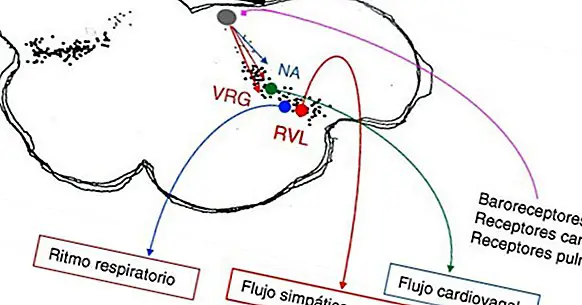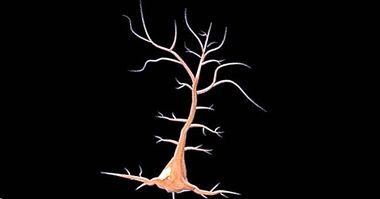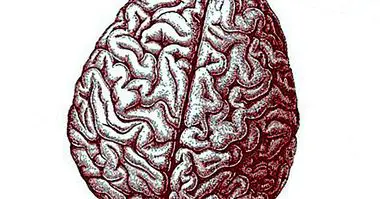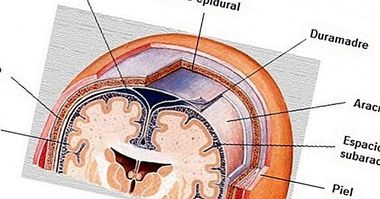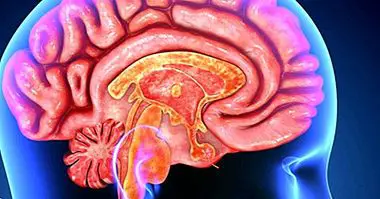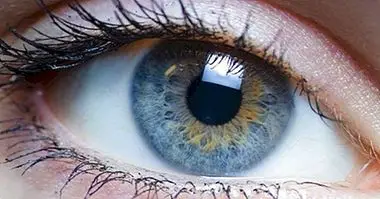What is the preBötzinger Complex? Anatomy and functions
As a general rule, in the resting state an adult human being breathes at a rate of between twelve and eighteen breaths per minute. Breathing is fundamental to our survival, a process that we carry out in a semi-conscious way continuously throughout our lives.
But who is responsible for us doing it? What part of our body causes us to carry out this basic function? The answer is found in the medulla oblongata, specifically in the preBötzinger complex .
The preBötzinger complex: description and basic location
The preBötzinger complex is a set or network of neurons located in the medulla oblongata or medulla oblongata , specifically in its ventromedial part, forming part of the brainstem. This neural network appears in both hemispheres, being a bilateral and symmetric structure. It is connected with the spinal cord, and it is as we have said fundamental for the generation and maintenance of the respiratory rhythm.
It is a recently localized structure, specifically in 1991, and it has found different types of neurons that allow through their interaction the genesis and rhythmicity of the respiratory cycle. The preBötzinger complexes of both hemispheres seem to operate partially independently, although they communicate in order to synchronize.
Principal functions
Although this structure is still little known, several important functions are attributed to him .
1. Basic respiratory rhythm
The preBötzinger complex is a fundamental element to keep us alive, and its injury can cause death due to respiratory depression. Its main function is the generation and management of respiratory rhythm .
2. Adequacy of breathing to environmental needs
Interaction with other areas of the brain causes the preBötzinger complex to regulate the respiratory rate according to environmental needs . For example, if we play sports, our breathing will be accelerated.
3. Oxygen level uptake
It has been detected that this complex and its connections are able to detect and act according to the oxygen level in the organism. For example, if we are suffocating it is frequent that our respiratory rate is accelerated , since the body seeks to acquire the oxygen necessary to survive.
An unknown mechanism of action
The way in which this structure works is still not completely clear, but through experiments with rodents it has been shown that the hormone neurokinin-1 and the action of neurotransmitters are linked to the receptor.
It has been observed the existence of neurons "pacemaker" (similar to what happens with the heart rate), some voltage dependent and other independent of this. Its exact functioning is still discussed, although it is speculated that the voltage dependents are the most linked to the generation of the respiratory rate by allowing the emission of action potentials through sodium uptake.
In any case the hypothesis with greater empirical support is the one that indicates that it is the action of the set of neurons and their interaction that allows the rhythm to be generated , being the result of the interaction and not the activity of a single type of neurons.
Much more research is necessary in order to know the exact functioning of this region, being a field of study to deepen.
Neurotransmitters involved
With regard to the neurotransmitters with greater effect in this area, it has been perceived that it is essential that there is glutamatergic activity for the pre-Bötzinger complex to act by allowing respiration. Specifically, it is the activity of the AMPA receptors that plays the leading role, although there is also some participation of NMDA receptors in the process (despite the fact that in some studies the modification of NMDAs did not generate real changes and does not seem to result indispensable). Its inhibition can cause the cessation of the respiratory rate, while the use of agonists causes an increase of this .
When it comes to reducing the respiratory rate, the neurotransmitters that seem to act most are GABA and glycine.
In addition to the above, there are other neurotransmitters that influence the respiratory rate through this structure. Although they do not directly participate in the genesis of the respiratory rhythm, they do modulate it. Examples are found in serotonin, adenosine triphosphate or ATP, substance P, somatostatin, noradrenaline, opioids and acetylcholine. That is why many substances and drugs cause an alteration of the respiratory rate.
One aspect to keep in mind is that emotions also have an important effect on the respiratory rate, due to the effect on this area of the secreted neurotransmitters. For example, in the case of experiencing nervousness or anxiety the increase in the respiratory rate is observed, whereas in the face of despair and depression it tends to slow down.
Effects of the injury in this area
Although the preBötzinger complex is not the only element involved in respiratory control, it is currently considered the main element in charge of regulating it. Alterations in this area can cause consequences of different magnitude, such as respiratory augmentation or depression. And this can come from congenital injuries, trauma, cardiovascular accidents or administration of psychoactive substances. In extreme cases it can lead to the death of the patient.
It has been observed in the postmortem analysis of people with dementia with Lewy bodies or atrophy usually a decrease in the population of neurons reactive to the aforementioned neurokinin-1, which can explain the presence of respiratory disorders in these diseases.
Bibliographic references:
- Beltran-Parrazal, L .; Meza-Andrade, R .; García-García, F .; Toledo, R .; Manzo- J .; Morgado-Valle, C. (2012). Central mechanisms of the generation of the respiratory rhythm. Medical journal. Brain mechanisms. Veracruzana University, Mexico.
- García, L .; Rodríguez, O. and Rodríguez, O.B. (2011). Regulation of respiration: morphofunctional organization of its control system. University of Medical Sciences. Santiago de Cuba.
- Muñoz-Ortiz, J .; Muñoz-Ortiz, E .; López-Meraz, M.L .; Beltran-Parrazai, L. and Morgado-Valle, C. (2016). The pre-Bötzinger complex: generation and modulation of the respiratory rhythm. Elsevier Spanish Society of Neurology.
- Ramirez, J.M .; Doi, A .; García, A.J .; Elsen, F.P .; Koch, H. & Wei, A.D. (2012). The Cellular Building Blocks of Breathing. Comprehensive Physiology; 2 (4): 2683-2731

